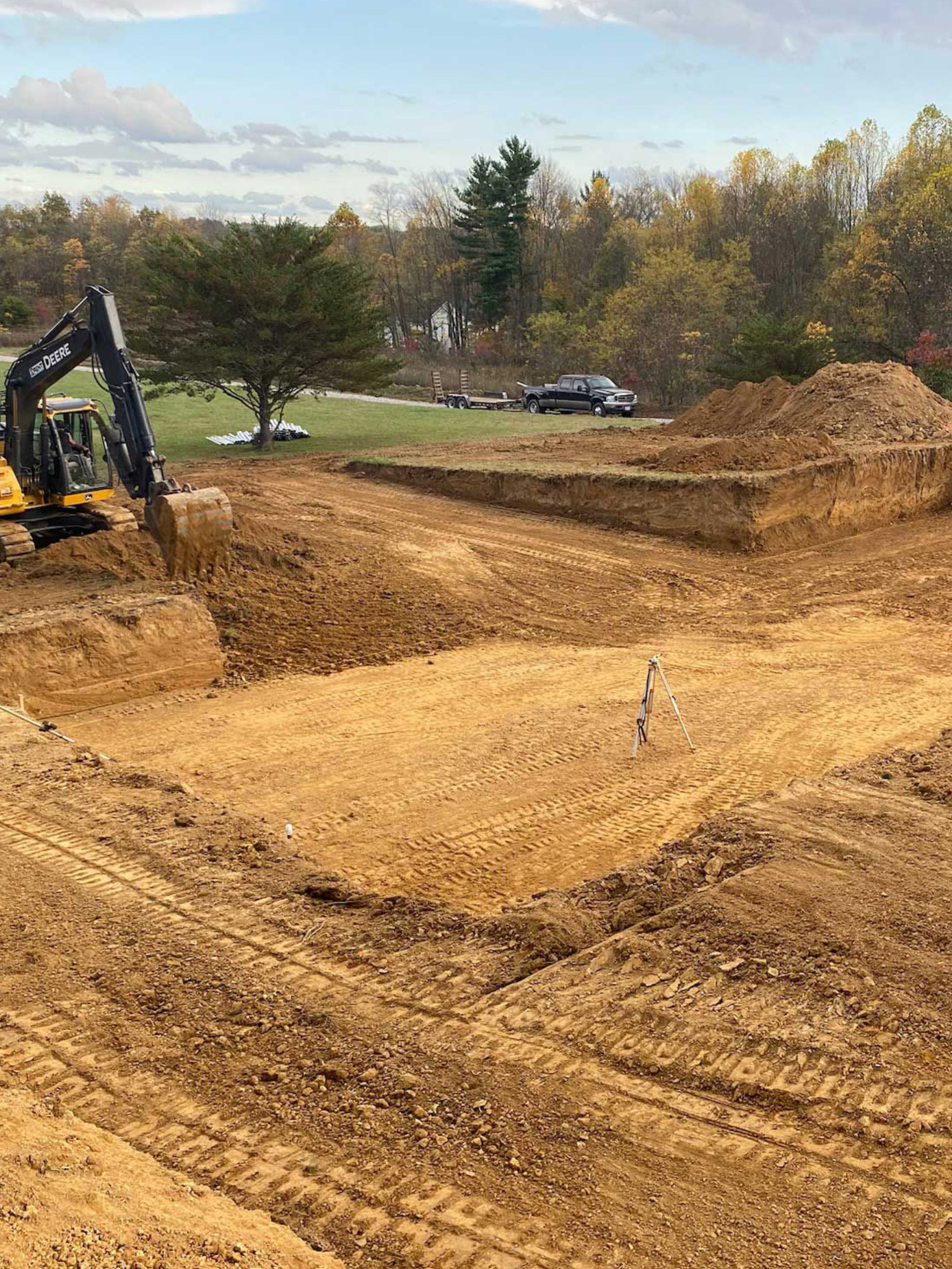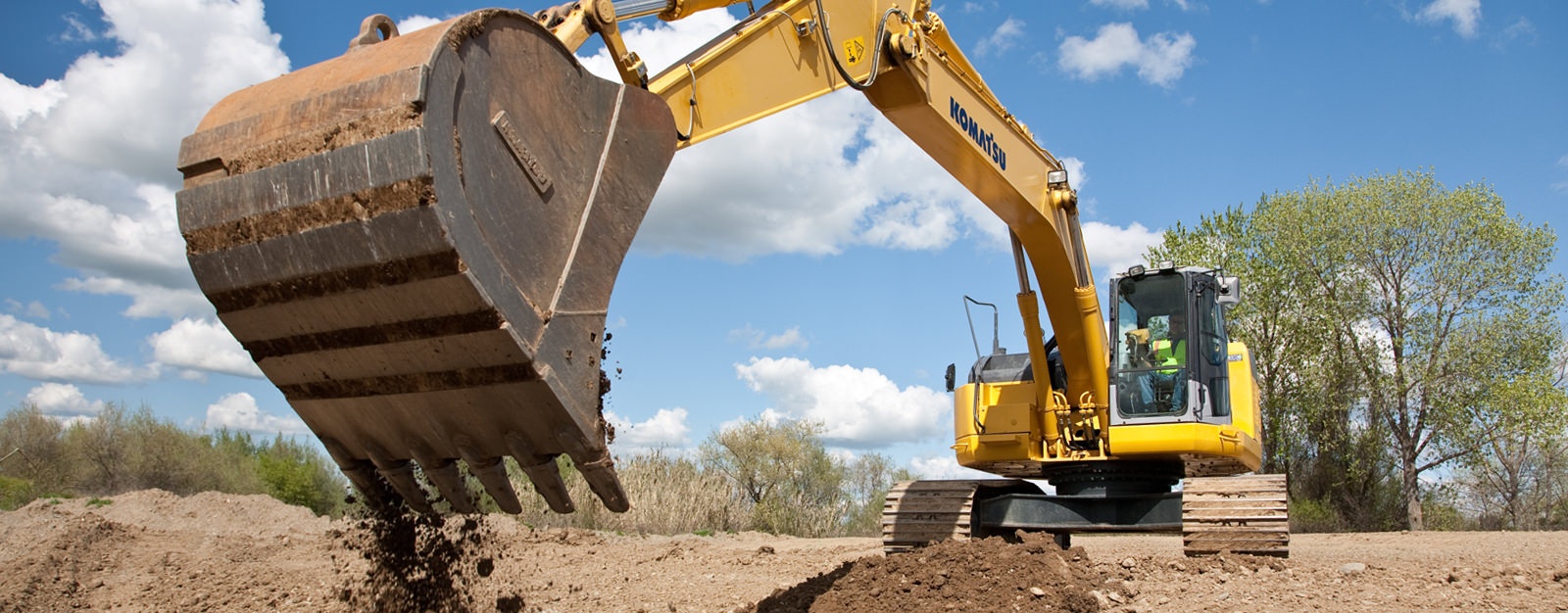Lancaster Trenching - Specialist Trenching Solutions in Lancaster, Ohio
Lancaster Trenching - Specialist Trenching Solutions in Lancaster, Ohio
Blog Article
Unveiling the Art of Excavation: Pro Tips for Safe and Productive Digging
As soil is turned and planet is moved, the intricacies of excavation expose themselves, requiring a keen understanding of tools, soil make-up, safety methods, and environmental factors to consider. The competence needed to navigate these components effectively can indicate the difference between an effective excavation project and a possible disaster.
Significance of Correct Equipment
To guarantee the security and performance of any kind of excavation task, utilizing the suitable devices is extremely important. Excavation tasks differ in extent and intricacy, varying from tiny household landscape design work to large building and construction undertakings.
These flexible devices come in various dimensions to fit different project needs. Miniature excavators are suitable for smaller jobs, while bigger excavators tackle more considerable jobs efficiently.
Aside from excavators, other critical tools includes dump plates, bulldozers, and trucks. Discard vehicles are important for removing and transferring excavated materials, while plates are utilized for digging narrow and deep trenches. Excavators stand out in tasks that require pushing large amounts of dirt or debris. By buying the suitable tools, excavation projects can be finished securely, in a timely manner, and with precision.
Recognizing Soil Structure
A detailed understanding of dirt composition is essential for implementing excavation jobs with accuracy and safety. Comprehending the various kinds of soil is important as it directly affects excavation techniques, devices choice, and general project efficiency.
Sand particles are the largest and provide excellent water drainage yet use little communication. Silt bits are smaller than sand but bigger than clay, supplying modest drain and cohesion. Clay particles are the tiniest and supply high cohesion but inadequate water drainage. Organic issue, such as rotting plant product, affects dirt fertility and stability.
Before commencing excavation, performing dirt tests to establish its structure and attributes is vital. This information aids in picking the proper equipment, executing precaution, and creating excavation techniques tailored to the certain soil problems - lancaster trenching. By understanding dirt composition, excavation specialists can improve task results while ensuring security and adherence to best techniques
Security Actions and Procedures
Understanding soil composition is the keystone upon which safety procedures and protocols for excavation tasks are built, ensuring the wellness of employees and the success of the endeavor. There are a number of vital measures that have to be carried out to minimize dangers and prevent mishaps. when it comes to safety and security during excavation.
Primarily, prior to any excavating commences, a detailed assessment of the site ought to be performed to identify any kind of possible dangers such as below ground energies, unpredictable soil problems, or neighboring frameworks that could pose a danger. It is vital to have a competent person oversee the excavation process to ensure that all security protocols are followed purely.
Additionally, all employees entailed in the excavation should be effectively trained in risk-free excavating practices and the appropriate procedure of equipment. Personal protective devices (PPE) such as construction hats, high presence clothing, gloves, and security boots must be put on at all times to reduce the danger of injuries. excavating ohio. Routine security conferences and tool kit talks must additionally be conducted to keep all workers informed about potential risks and strengthen secure job practices. By sticking to these security procedures and methods, excavation tasks can be finished efficiently and without event.
Effective Excavation Planning
When starting an excavation task, thorough preparation is vital to ensure efficiency, safety, and effective end results. Effective excavation planning entails several essential actions that are crucial a knockout post for the smooth execution of the job. The initial step is to carry out a comprehensive site analysis to identify any kind of prospective hazards, such as below ground energies or unstable dirt problems. This information is vital for creating an in-depth excavation plan that includes precaution and take the chance of mitigation techniques.
Once the website analysis is complete, the next action is to create a clear timeline and timetable for the excavation activities. This includes establishing the sequence of jobs, equipment needs, and manpower allotment. Correct scheduling assists stay clear of delays and makes certain that the job remains on track.

Additionally, interaction among all group members is extremely important during the preparation phase. Clear directives, normal updates, and efficient sychronisation are essential for an effective excavation job. By spending time and effort in thorough planning, excavation groups can substantially boost productivity, lessen risks, and accomplish effective results.

Taking Care Of Ecological Considerations
With enhancing emphasis on ecological sustainability in construction techniques, taking care of ecological considerations has actually come to be a crucial element of excavation jobs. Excavation activities have the prospective to impact the surrounding setting with soil disintegration, debris drainage, habitat disturbance, and contamination of water sources. To minimize these risks, it is necessary to carry out best methods that focus on environmental defense.

Furthermore, proper waste administration is vital to avoid soil and water contamination. Carrying out treatments for the disposal of harmful products, recycling of waste products, and decreasing using hazardous chemicals can significantly minimize the environmental impact of excavation these details projects. By integrating these techniques right into excavation planning and execution, construction firms can ensure that their tasks are not just risk-free and productive yet additionally ecologically responsible.
Conclusion
Finally, understanding the art of excavation calls for a comprehensive understanding of proper tools, dirt structure, precaution, and efficient planning. By following these standards and taking into consideration ecological elements, excavations can be conducted safely and efficiently. It is important to prioritize safety and efficiency in every digging task to make certain effective results.
As dirt is turned and earth is relocated, the intricacies of excavation reveal themselves, requiring a keen understanding of devices, soil composition, safety click resources and security protocols, and ecological considerations.To ensure the security and performance of any type of excavation project, using the appropriate devices is paramount.A detailed understanding of dirt structure is essential for executing excavation jobs with accuracy and security. Recognizing the different types of dirt is essential as it straight influences excavation methods, devices option, and overall job performance. By understanding soil structure, excavation specialists can enhance project results while making certain safety and adherence to finest methods.
Report this page